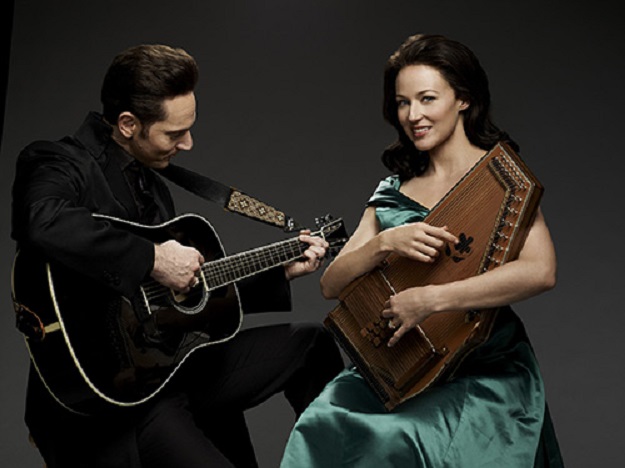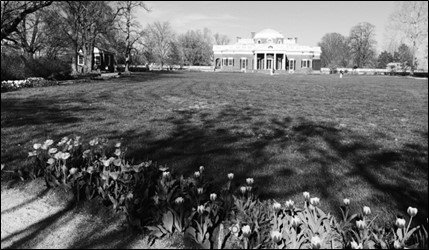
12. Southerners in the Late 19th and Early 20th Centuries
**The Yearling (1946). This is an all-time favourite about family life on the Florida frontier and a troublesome pet deer. Seldom noticed is that the father, Gregory Peck, is a former Confederate soldier. The film is based on the novel by Marjorie Kinnan Rawlings. Another fine Rawlings book about her life among Florida “crackers” during the Depression was made into a less successful film, (X) Cross Creek. This one comes across as feminist meets Dogpatch. The star, Mary Steenburgen, is from Arkansas and should have known better.
**The Virginian (2000). Owen Wister’s 1902 novel The Virginian is a benchmark in American Western literature and made the Cowboy an American icon. Its Southern hero in Wyoming cattle country acts with natural integrity, deals with rustlers, and successfully courts the Yankee schoolmarm and corrects her strange notions. The Virginian has been put on the screen numerous times, dating back to the silent film era, and it provided the title for a popular TV series that ran for nine seasons. Unlike its predecessors, which were at best routine oaters, this 2000 version with Bill Pullman is excellent, I might even say beautiful. It has a real feel for the Wyoming frontier and a poetic appreciation for the characters. By contrast, (X) The Virginian (1946) with Joel McRea is a joke. Whoever made that version evidently knew nothing about the book except a plot summary, piled on every false Hollywood idea of “the West,” and completely missed the point.
**The Bostonians (1984). Why have I included a movie which takes place mostly in Boston on my Southern list? Henry James, who published his novel The Bostonians in 1886, is regarded on both sides of the Atlantic as one of the greatest fiction writers in English of all times, although for us plain folk he is something of an acquired taste, like opera. In The Bostonians a young ex-Confederate from Mississippi comes to New York in hopes of making a living. He pays a visit of duty to a lady cousin in Boston where he meets “the girl of his dreams.” There follows a contest between Boston reformers who want to use the young lady, who has a mesmerizing stage presence, as an orator for feminism, and the Southerner, who wants her for his wife. This time, the Southerner wins. Though defeated and poor, he is alive and vital, a great contrast to the decayed Boston society living on the remnants of abolition glory.
**Song of the South (1949). Atlanta newspaperman Joel Chandler Harris began writing his Uncle Remus stories in 1876 and continued till 1906. They became immensely popular in America and across the world. Uncle Remus, a former slave, tells white and black children his fascinating and meaningful stories of Br’er Rabbit and his friends in the Briar Patch The work is now disparaged because Uncle Remus is a wise and good man rather than a revolutionary and thus is not appropriate as a role model. But Harris was personally knowledgeable of and inspired by firsthand acquaintance with African Americans and he preserved a great body of African American folklore that might otherwise have been lost. Disney successfully rode the popularity of Uncle Remus into Song of the South, very popular in its time. It is a musical, part animated and part live action (the first live action film produced by the cartoon genius Walt Disney). It is a charming film. Uncle Remus’s song “Zip-a-Dee-Doo-Dah” won the Academy Award for best song. James Baskett’s performance as Uncle Remus is excellent and he was the first black man to receive an Oscar. Of course, today the Disney Corporation does not produce or celebrate this non-PC classic and a DVD is hard to find. My copy has Japanese subtitles. And you can always read the books.
**The Rough Riders (1997). A well-done history of the famous U.S. 1st Volunteer Cavalry in the Spanish-American War. Much attention is given to Teddy Roosevelt and to volunteers from the Northeastern elite, but there is much Southern flavour also. Sam Elliott is the Texas sheriff who leads Southwestern volunteers and Gary Busey is former Confederate and now U.S. General Joe Wheeler, who now and then forgets that he is fighting the Spanish and not the Yankees.
**I’d Climb the Highest Mountain (1951). A Methodist minister and his wife bring God to a rural Georgia community, which is pictured realistically and sympathetically. Based on the real-life memoirs of Corra Harris that were once very popular.
WHAT COULD BE: Wister’s novel about Charleston, Lady Baltimore, published four years after The Virginian, would make a fantastic story for a Southern film industry. It contrasts the genteel impoverished folks of Charleston with New Rich Yankees.
___________________________________________________
13. Southern African American Film
**Green Pastures (1936). From the 1920s through the 1940s, Hollywood produced a number of films with all African American casts. It would be presumptuous of me to pass judgment on these films since my viewing has been limited and the published history of this phenomenon seems highly politicised. Such films are not highly regarded today as products of the era of segregation. However, my impression is they are always set in the South, have traditional black music, portray genuine African American communities, and concern Christian and very Southern themes of sin and salvation. Needless to say these films are different in tone from what is being produced today. Green Pastures is a modern-day retelling of Bible stories.
**Hallelujah (1929). This is more realistic than Green Pastures, portraying real men and women in moral struggle.
**Cabin in the Sky (1943). A musical featuring all of the most prominent African-American performers of the period and dealing with the eternal question of sin and redemption.
(?) Porgy and Bess. Dubose Heyward’s moving novel Porgy, about the poor black people of “Catfish Row” in Charleston, was published in 1925. On Broadway it became a play and then a Gershwin musical. Not until 1959 did a movie version of the musical appear. It cannot be evaluated because the Gershwin estate has not allowed a DVD. It received a very limited release, “mixed” reviews from the critics, and apparently the producer, Samuel Goldwyn Jr., considered it a failure.
Before World War I migration to the Northern cities, African Americans were always taken for granted as Southern. There were few black people in the North and Northerners did not like black people and feared and hated them—as they always had. In the very popular Amos & Andy radio show in the 1930s and 1940s, two white men from Georgia presented a friendly side of black people to Northern audiences. That did not, however, prevent deadly race riots in Chicago and Detroit.
14. Country Music in Film
**Coal Miner’s Daughter (1980). Well done and pretty authentic life of Loretta Lynn. Southern-born Sissy Spacek and Tommy Lee Jones speak correctly, and the incredible Spacek does her own singing, for which she received Best Actress (Musical) Oscar. Doubtless the accuracy and respect for the characters are due to Lynn’s co-operation and to the Brit director Michael Apted, who approached the subject without the usual Yankee sense of superiority. This cannot be said about (X) Sweet Dreams (1985), allegedly about the life of Patsy Cline. This film is ripe with Yankee disdain for Southern plain folk and seems to have been made with little other purpose. The realistic and respectful treatment of Cline in Ken Burns’s **Country Music indicates what a malicious travesty (X)Sweet Dreams is. Ohio-born Beverly D’Angelo does Patsy Cline much better in Coal Miner’s Daughter and even does her own singing.
**Ring of Fire (2013). There are a good many movies in the 2000s about the major greats of the Southern country music that took the world by storm in the 20th century. This biopic about June Carter Cash seems to me head and shoulders above the others. The film is sympathetic and respectful to its country subjects. The singer Jewel is outstanding as June, and she and Matt Ross as Johnny Cash, are conscientious about the right accents, although not native to them. Rare for Hollywood. I cannot say the same for (T) I Walk the Line (2005), a biopic of Johnny Cash. Reese Witherspoon is OK as June, although her Oscar is more deserved by Jewell. The story seems sound enough, but a badly miscast Joachim Pheonix mumbles his way through an impersonation of Johnny Cash. The performances in this film were highly praised, perhaps because Hollywood thought it was such a challenge to portray such alien creatures as Southern plain folk.
(T) I Saw the Light (2015). This biopic of the immortal Hank Williams has good and bad points. The English actor Tom Hiddleston as Hank and other characters do well on the accents. Hiddleston does his own singing. Not bad imitation but it lacks the Southern soul that made Williams great. No idea how accurate the story is but it leans heavily on alcohol and divorce.
(X) The Last Ride (2011), about Hank Williams, seems to me singularly uninteresting.
I have not bothered with any of Elvis’s trivial movies or film treatments of Elvis.
**Country Music: A Film by Ken Burns (2019). The music of white Southern plain folk, called “country” as a marketing label to disguise its source, is a major presence in 20th century American culture. It is too big and too beautiful to too many people to be ignored. Southern literature, of which it forms a part, is the only living cultural creativity in superficial and ephemeral “American culture.” When something Southern is too important to be ignored, it becomes “American.” Yankees can’t create but they are good at stealing. This is an age-old phenomenon and doubtless forms the motive of this series—a Yankee imperial takeover by control of money and media. Thus the Southern music creators of the 1960s get referred to as “The Sons and Daughters of America”—just like the radicals and rioters of the same period. And African-Americans get a fourth of the screen time and billing as if they were the real originators of the music and the music is an aspect of the Civil Rights Revolution. Burns seems to think that the appearance in Nashville of Northern parasites like the faker “Bob Dylan” was a great boon to country music. I always approach Ken Burns with skepticism. In his “Civil War” and other productions he is the Great Distorter who falsifies history to fit the sentiments of a current liberal. Nevertheless, this is worth watching. It is good to have the history told (up to the 90s). The people and the music are intrinsically attractive. (As in “The Civil War” the material was intrinsically attractive despite the doctored interpretation.) These country music people really are the soul of America and it can’t be disguised. Two things I most noticed: the prevalence of poverty as the mainstream of Southern life through most of the 20th century, and the beauty of the accents that are now disappearing. “Country music” is today rapidly sinking into the lowest common denominator, which is the “American” way. It is good to have this record of the time when it was real.






